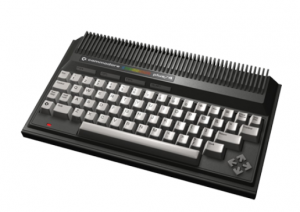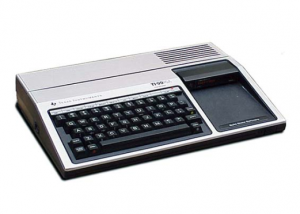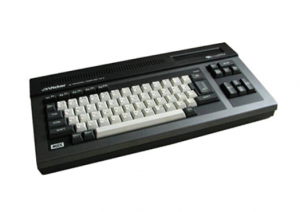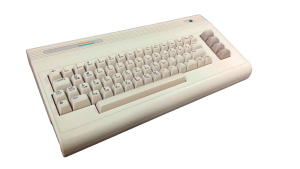In the mid-1980s the home-computer boom was in full swing, and in 1984 in particular a wide variety of machines appeared on shop-shelves as companies sought to capture the growing market of families, students and hobbyists. In that environment the Commodore 16 was introduced, intended as a lower-cost entry machine from Commodore and part of a new “TED-series” of computers targeting affordability and simplicity rather than the high-end gaming power of the company’s flagship machines.
Background and the year 1984
1984 was a year in which many home-computers were released or refreshed. For example, the British firm Amstrad CPC 464 was launched in April 1984 and became one of the best-selling European machines. Meanwhile the existing 8-bit market was showing signs of saturation, new competitors appeared, and some companies began to struggle. The article cited above notes that while the 8-bit home-computer boom was still going in 1984 it was also showing early signs of change, as PC-compatibles and more advanced machines began to loom. In this market Commodore launched the C16 and its siblings, attempting to carve out a niche in the lower-cost, beginner home-computer segment.
The Commodore 16 (C16) belongs to the family sometimes called the “264 series” or “TED-series” of machines (including the C16, the cheaper C116 and the higher-spec Commodore Plus/4). It was launched in 1984 (variously cited as June or September) with the intention of being a budget computer, replacing the older Commodore VIC‑20. The specification: it used a MOS 7501 or 8501 CPU (6502-compatible) at ~0.89 MHz (or 1.76 MHz in some setups) and shipped with 16 KB of RAM (hence the “16” in its name) and 32 KB of ROM, running BASIC 3.5 built-in. Graphics were provided via the “TED” chip (Text Editing Device) which offered 121 colours, a 320×192 (or 320×200) graphics mode and a 40×24 text mode. The machine was pitched at a lower price-point (in the U.S. approx. US$99) and aimed at beginners or budget buyers.
The numbers are somewhat fuzzy. Some sources claim that more than 1,266,000 C16s were produced worldwide. Other sources put the combined total for the 264-series (C16, C116, Plus/4) at around one million units sold worldwide. Whichever the precise figure, the C16 did not approach the blockbuster sales of Commodore’s older workhorse the Commodore 64, which sold many millions of units. Nonetheless, the C16 did see a non-trivial number of units, mostly in Europe and Mexico rather than in the U.S. market. The production was short-lived: many sources indicate the line was discontinued by 1985 or liquidation began in 1986.
The C16 and its series received a mixed reception from the press. On the positive side, reviewers noted the improved BASIC 3.5 (compared to the VIC-20’s and even the C64’s BASIC), which included commands for graphics and sound, making it somewhat more friendly for programming beginners. The machine’s colour palette via the TED chip offered more colours and better flexibility than the very budget machines of the time. On the negative side, a prominent complaint was incompatibility with the large software-library and peripherals of the C64 and the VIC-20: the C16 used different port connectors (mini-DIN joystick ports, a cassette port incompatible with the older ones) meaning existing VIC/C64 accessories could not be reused. Another significant criticism was the small memory of only 16 KB, at a time when 64 KB was already becoming the norm for home computers and many games and applications expected more than 16 KB. The sound capabilities were also considered weak compared to the C64’s legendary SID sound chip: the TED offered two voice channels plus noise, but lacked the rich features of the C64. Furthermore, software-support was thin: as one site notes, “the C16 was a major failure in the U.S. … but it sold reasonably well in Europe as a low-end game machine. Commodore’s direction was unclear. Instead of delivering new irrelevant machines at the lower end of the price range, Commodore should have been prepared to lower the price of the 64. In other words, many reviewers felt the C16 did not deliver compelling value compared with the C64 or other machines in the market.
Given its budget price and beginner-focus, why would someone purchase a Commodore 16? For families or first-time computer users, the C16 offered a full keyboard, BASIC interpreter, graphics and sound capabilities, and the backing of the Commodore brand. It may have been attractive as a low-cost “starter” machine for programming, home use, education or light gaming. The more advanced BASIC meant that a user could more easily experiment with writing simple graphics and sound programs than on older, more limited machines. Schools or educational markets might have considered it for budget installations. In countries where the C64 was still relatively expensive, a cheaper Commodore machine might have been the most affordable entry point. Indeed in Mexico, the C16 was distributed under licence from early 1985 onwards. For hobbyists interested in programming, the machine’s smaller size of RAM and lower cost may have been acceptable trade-offs for exploring BASIC, small games or tinkering. The colour palette and built-in BASIC 3.5 gave more “headroom” than some lowest-cost machines of the era. Why did the C16 face stiff competition and ultimately struggle? In 1984 the home-computer market was crowded: besides Commodore’s own machines, there were the Sinclair ZX Spectrum and its successors, the Amstrad CPC line, machines from Dragon, MSX-standard machines from Japan, and other budget lines. The Amstrad CPC 464 (released 1984) is a good example of a strong competitor. Within this context the C16’s positioning was tricky: it offered less than the flagship C64, but cost more than some ultra-budget machines, and importantly lacked compatibility with the C64’s vast software library, which many buyers valued.
Although the C16 did not become a major success, its existence illustrates an interesting chapter in the Commodore story: the attempt to diversify the product line downward, capture beginners and educational buyers, and leverage a new chip (the TED) for lower cost. For retro-enthusiasts today it remains a machine with some charm — the BASIC 3.5, the 121-colour palette, the odd case that resembles the bread-bin C64 but in a different colour — but it is also often cited as a lesson in mismatched positioning and the importance of software/library/compatibility in the home-computer era.
Commodore 16 overview
The Commodore 16 was launched in 1984 in a home-computer market at its peak, with many new machines vying for consumer attention. It was released by Commodore as a modest, budget-oriented machine based on the TED-chip architecture, aimed at beginners, students and cost-sensitive buyers. Although it offered some improvements (especially BASIC 3.5 and an expanded colour palette), it suffered from limited memory, weak peripheral compatibility, thin software support, and a confusing position relative to its more capable sibling the C64. Its sales, though non-zero, did not match Commodore’s major successes, and the line was quickly discontinued by 1985/86. In the end, while it provided an entry path for some users and helped illustrate the shifting landscape of 1984’s home-computer boom, the Commodore 16 remains a niche footnote in computing history rather than a watershed product.






























